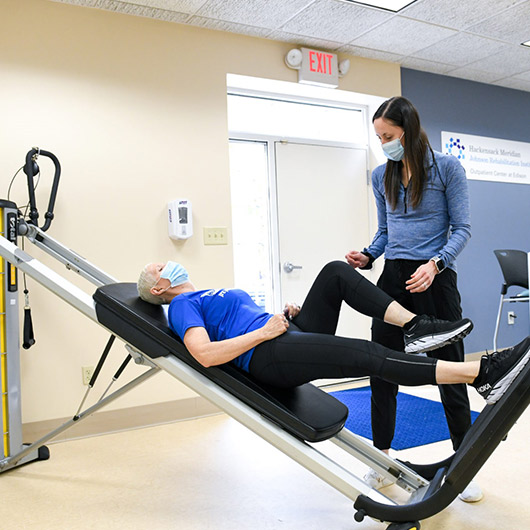Is Virtual Physical Therapy Really Possible?

June 30, 2021
Since physical therapy often employs hands-on healing, like maneuvering muscles, stretching joints and other manual techniques, you might consider it an in-person-required treatment. But that’s not the case.
“There are plenty of things that can be done remotely,” says Cristobal Beiro, M.D., an orthopedic surgeon at Raritan Bay Medical Center. This is especially important for patients who don’t have transportation to a physical therapy office or for those who still have misgivings about leaving their house during the pandemic.
Benefits of Virtual Physical Therapy
The benefits of virtual physical therapy include:
- You work with a licensed physical therapist.
- You can receive the care you need while eliminating your risk of COVID-19.
- You don’t have to wear a mask because you’re in your own home.
- It’s convenient. If your injury prevents you from driving, you don’t have to worry about finding a ride or fighting traffic.
While most insurance plans cover telehealth physical therapy, check with yours on the rules. Some require you to schedule an initial in-person visit. You’ll also want to ask about your co-pay and/or co-insurance so you don’t get hit with any surprises down the line.
Get the Most from Telehealth
To get the most from your virtual appointment:
- Make sure you have a computer, phone or other device to get on the internet, as well as a reliable internet connection.
- Choose a spot that allows you enough space to lie down, walk around and stretch in full.
You’ll also want enough privacy so you feel comfortable sharing information freely with your therapist. You may prefer a separate room with a door, so spouses, kids or pets won’t distract you.
Dress in clothing comfortable enough so you can move, but snug enough so your physical therapist can evaluate your movements. Clothes like yoga pants and short-sleeves or tank tops work well.
Get the proper gear. Speak to your therapist about borrowing equipment you can use at home. You can also sub in household items like soup cans or water bottles for weights, or you can buy a set of inexpensive resistance bands.
Tell your therapist how your body feels before, during and after sessions. If anything hurts or feels uncomfortable, don’t be afraid to speak up. Your therapist can often modify the exercise so you can do it without pain. “As long as you use proper form, the risk of injury is low,” says Dr. Beiro.
The material provided through HealthU is intended to be used as general information only and should not replace the advice of your physician. Always consult your physician for individual care.
Urology Expertise Saves College Athlete’s Kidney

After a painful blockage in her ureter, Kali Grayson benefits from robotic surgery to cut out the ureter blockage and restore healthy kidney function.
